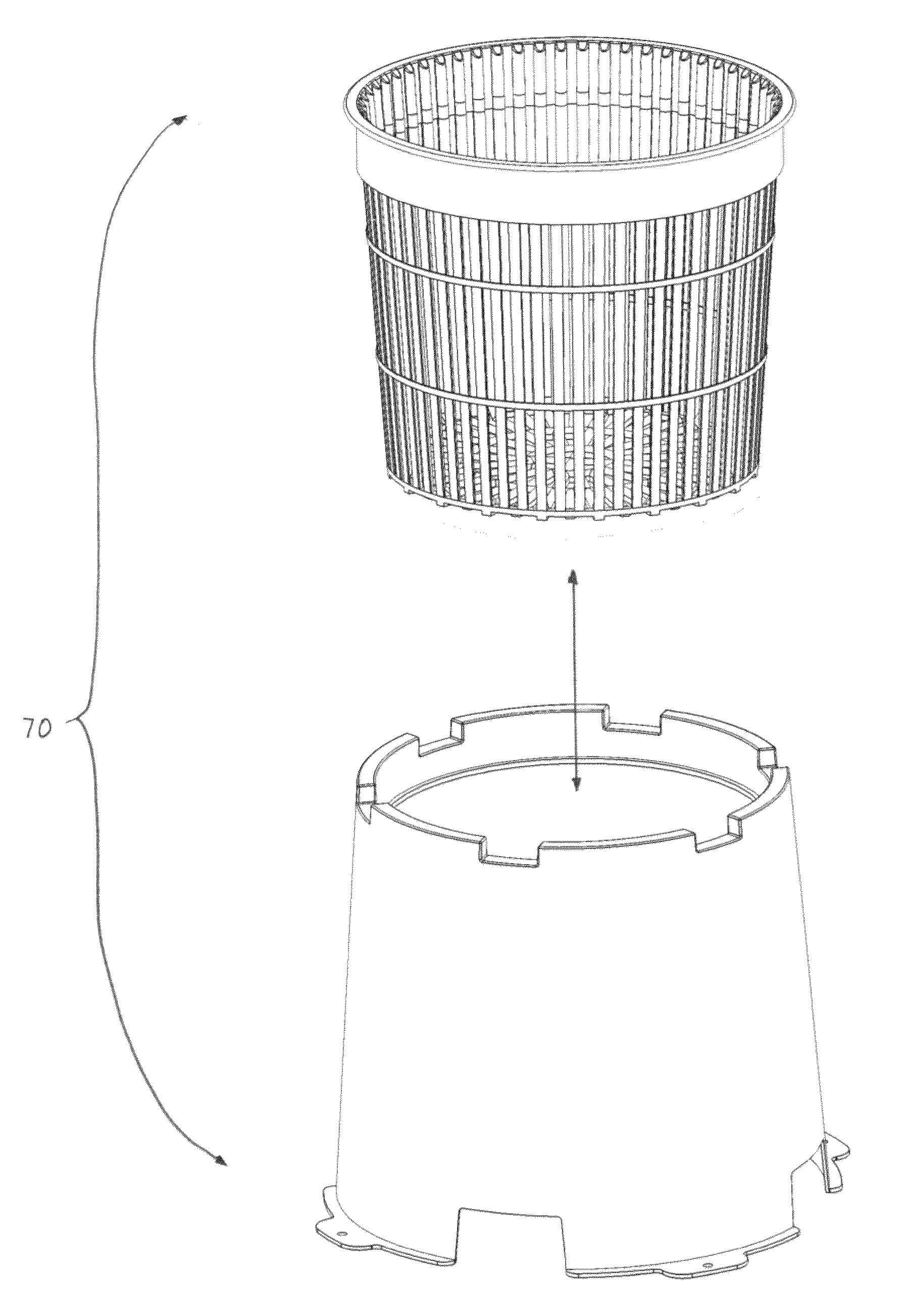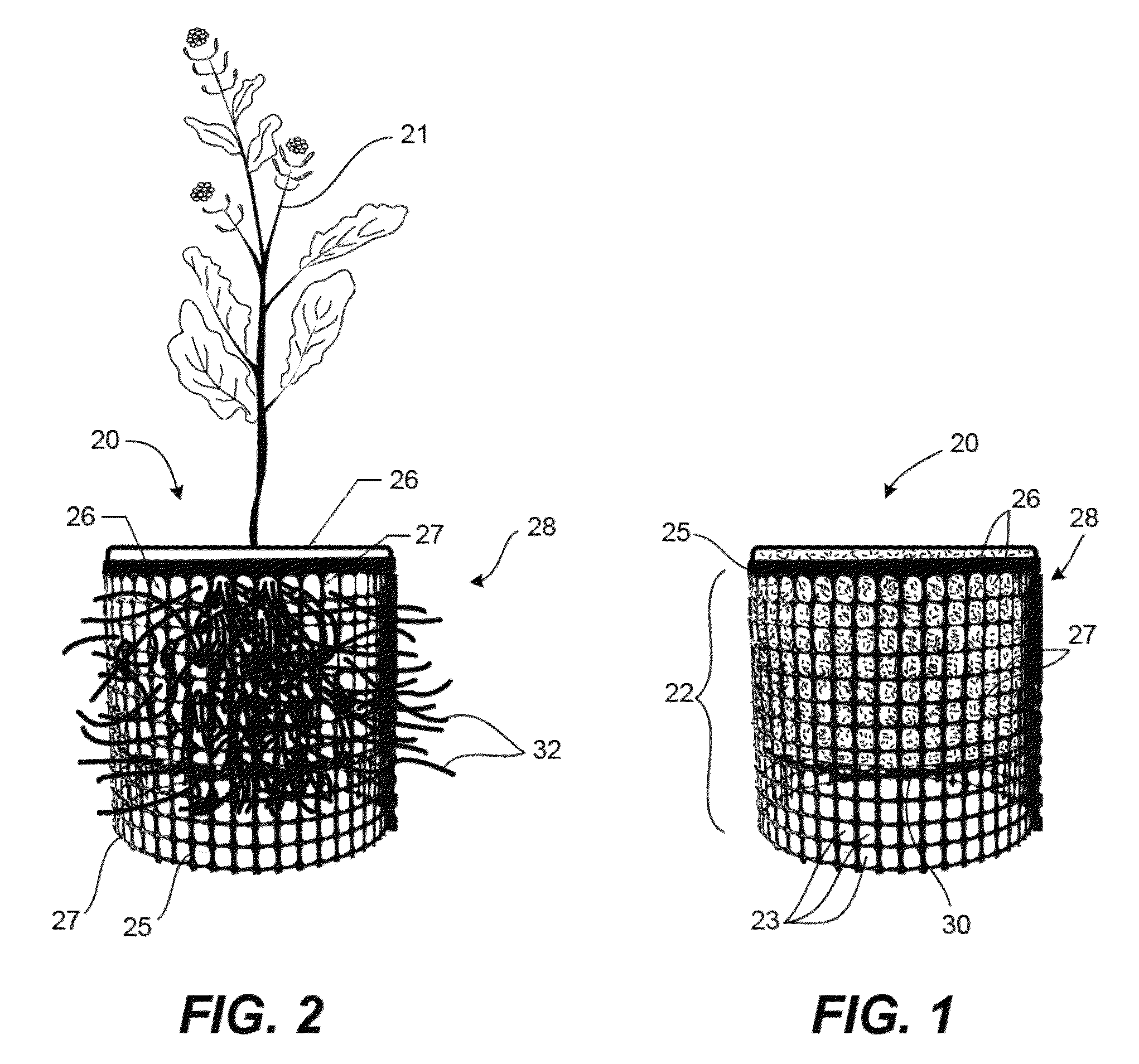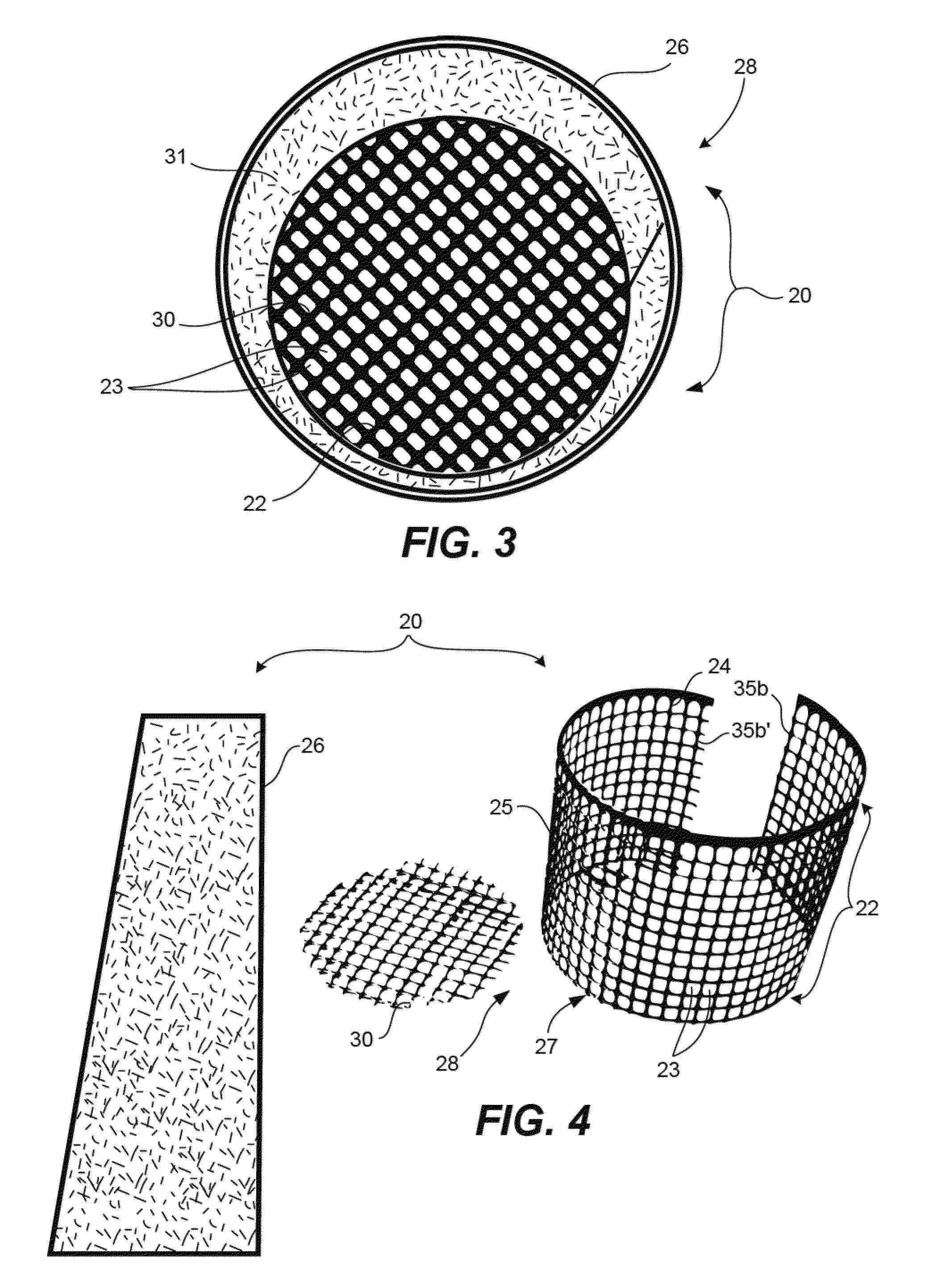Plant container assembly and method
a plant container and container base technology, applied in the field of containers, can solve the problems of significant stability problems, circling of roots, stem girdling roots, etc., and achieve the effect of encouraging air root pruning and vast improvement of root regeneration
- Summary
- Abstract
- Description
- Claims
- Application Information
AI Technical Summary
Benefits of technology
Problems solved by technology
Method used
Image
Examples
Embodiment Construction
[0063]While the present invention will be described with reference to a few specific embodiments, the description is illustrative of the invention and is not to be construed as limiting the invention. Various modifications to the present invention can be made to the preferred embodiments by those skilled in the art without departing from the true spirit and scope of the invention as defined by the appended claims. It will be noted here that for a better understanding, like components are designated by like reference numerals throughout the various figures.
[0064]Referring now to FIGS. 1-4, a bounding apparatus, generally designated 20, is illustrated, for bounding a growing medium in which a transplantable plant 21 is grown. The bounding apparatus 20 includes a sheet-like lattice framework 22 defining a plurality of spaced apertures 23 extending through the lattice framework from an interior wall 24 to an exterior wall 25 thereof. The bounding apparatus 20 further includes a relative...
PUM
 Login to View More
Login to View More Abstract
Description
Claims
Application Information
 Login to View More
Login to View More - R&D
- Intellectual Property
- Life Sciences
- Materials
- Tech Scout
- Unparalleled Data Quality
- Higher Quality Content
- 60% Fewer Hallucinations
Browse by: Latest US Patents, China's latest patents, Technical Efficacy Thesaurus, Application Domain, Technology Topic, Popular Technical Reports.
© 2025 PatSnap. All rights reserved.Legal|Privacy policy|Modern Slavery Act Transparency Statement|Sitemap|About US| Contact US: help@patsnap.com



